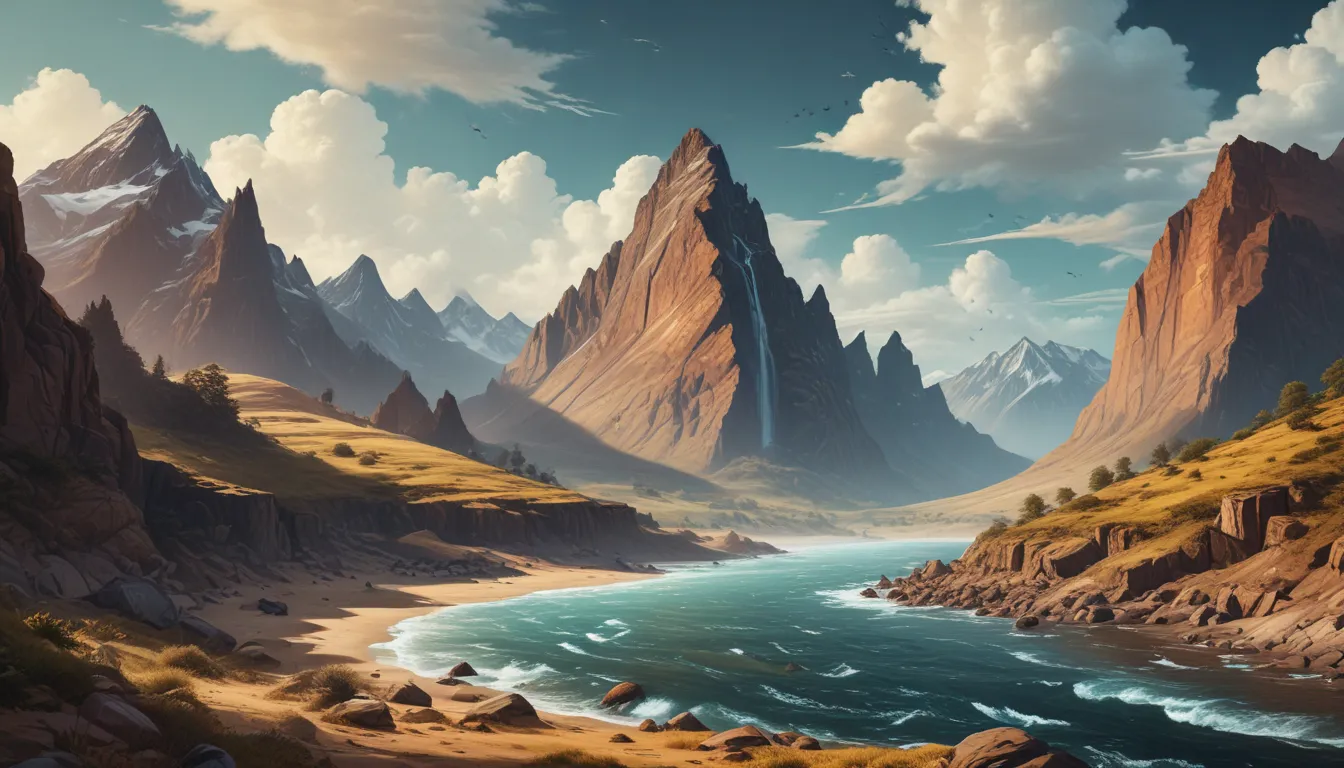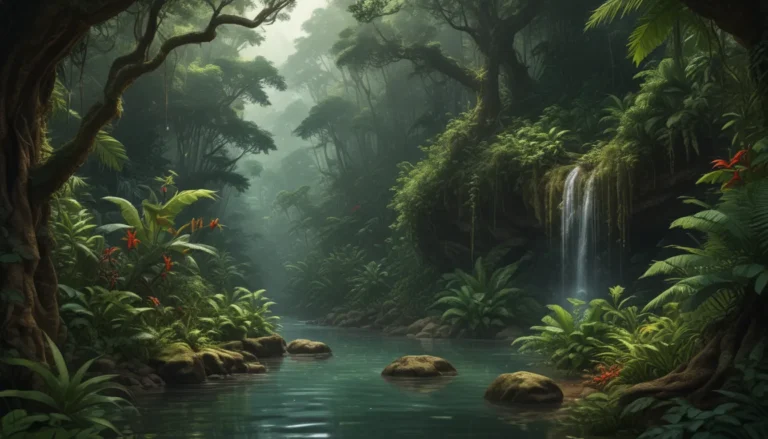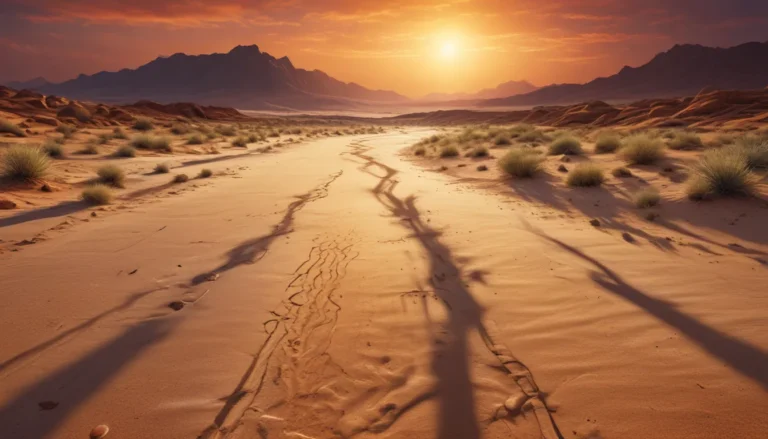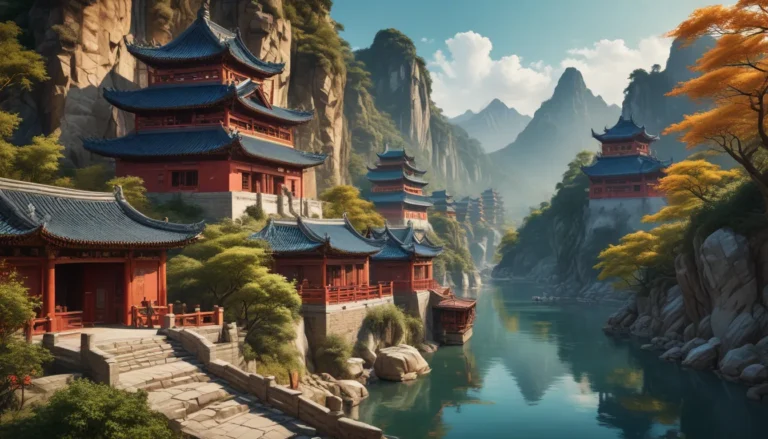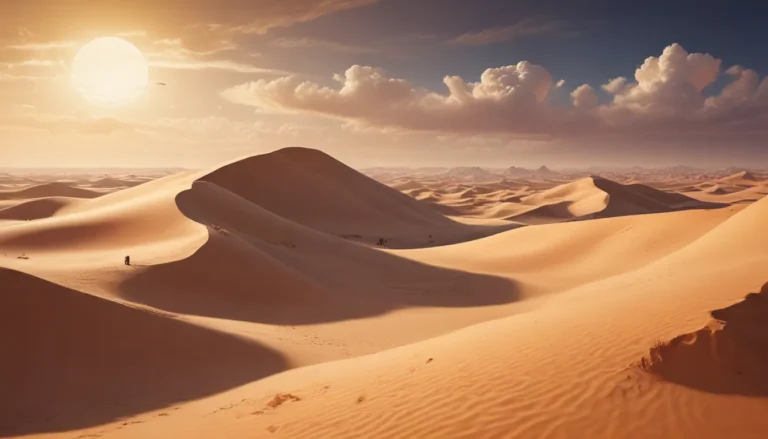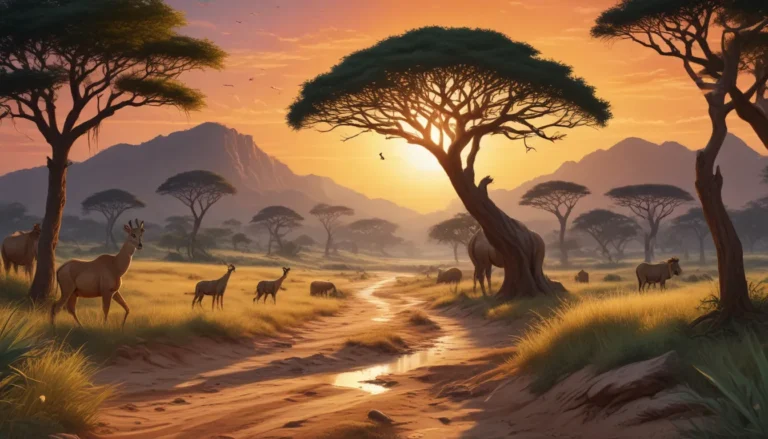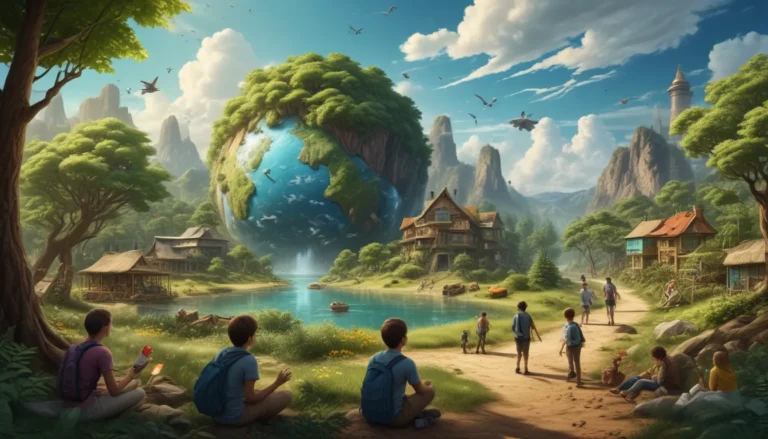A Note About Images: The images used in our articles are for illustration purposes only and may not exactly match the content. They are meant to engage readers, but the text should be relied upon for accurate information.
Welcome to the enchanting realm of landforms, where the Earth’s surface is transformed into a tapestry of breathtaking natural wonders. From the towering peaks of Mount Everest to the vast expanse of the Sahara Desert, landforms shape the landscapes we traverse and behold. Exploring the diverse range of landforms not only deepens our understanding of geography but also unveils the marvelous beauty and intricate processes that have crafted our planet. Whether you’re a geography aficionado, an intrepid traveler, or simply captivated by the wonders of nature, join us on a journey as we unveil 17 captivating facts about landforms, revealing the vast diversity and fascinating allure of the Earth’s surface.
Unveiling the Wonders of Landforms:
- Landforms offer a kaleidoscope of diversity, from the awe-inspiring Mount Everest to the expansive Sahara Desert. They not only mold our planet but also beckon us to embark on a voyage of exploration and revelation.
- Whether it’s the majestic Niagara Falls or the enigmatic Great Blue Hole, landforms harbor extraordinary natural marvels that enthrall our senses and beckon us to marvel at the splendor of our world.
The Grandeur of Landforms:
The Grand Canyon: Nature’s Marvel
Venture into the depths of the Grand Canyon, an awe-inspiring landform in Arizona that spans over 277 miles in length and plunges to a depth of over a mile, offering a glimpse into the Earth’s geological history.
Mount Everest: The Summit of Heights
Rise to the majestic heights of Mount Everest, the towering peak in the Himalayas that stands as the tallest mountain in the world, soaring to an astonishing height of 29,029 feet above sea level, beckoning adventurers and dreamers alike.
The Great Barrier Reef: A Coral Kingdom
Embark on a journey to the Great Barrier Reef, the largest coral reef system in the world, stretching over 2,300 kilometers off the Australian coast, a vibrant underwater world teeming with life and color visible even from space.
The Sahara Desert: A Sea of Sand
Cross the vast expanse of the Sahara Desert, the largest hot desert on Earth, spanning over 9.2 million square kilometers in Africa, a land of shifting sands and arid beauty that continues to shape its ever-changing landscape.
The Amazon Rainforest: A Lush Haven
Immerse yourself in the wonders of the Amazon Rainforest, the largest tropical rainforest on Earth spanning nine South American countries, a biodiversity hotspot brimming with life and untamed wilderness.
The Great Blue Hole: Ocean’s Enigma
Plunge into the depths of the Great Blue Hole, a colossal underwater sinkhole off the coast of Belize measuring approximately 300 meters across and 125 meters deep, a mystic abyss that lures divers into its azure depths.
The Himalayas: Peaks of Majesty
Journey through the Himalayas, a majestic mountain range spanning multiple countries including Nepal and India, home to the world’s highest peaks soaring over 8,000 meters, a realm of snow-capped summits and serene valleys.
Delving Deeper into Landform Mysteries:
The Transformative Sahara Desert:
Experience the dynamic nature of the Sahara Desert as it expands each year, shaped by climate patterns and shifting sand dunes, its vast expanse constantly evolving and reshaping the landscape.
The Ingenious Great Wall of China:
Marvel at the engineering marvel of the Great Wall of China, stretching over 13,000 miles across ancient China, a testament to human ingenuity and architectural prowess, built centuries ago to defend against invasions.
The Mesmerizing Niagara Falls:
Witness the sheer power of nature at the Niagara Falls, a majestic waterfall formed by the Niagara River on the US-Canada border, attracting millions of visitors with its thunderous cascade and panoramic views.
The Enigmatic Dead Sea:
Descend to the lowest point on land at the Dead Sea, nestled between Jordan and Israel, renowned for its high salt concentration that renders swimmers buoyant, a unique geological feature steeped in history and myth.
The Fiery Ring of Fire:
Explore the Ring of Fire encircling the Pacific Ocean, a region pulsating with intense volcanic activity and frequent earthquakes, shaping a distinctive landscape dotted with volcanoes and geothermal wonders.
The Majestic Victoria Falls:
Be captivated by the grandeur of the Victoria Falls, one of the largest waterfalls in the world on the Zambia-Zimbabwe border, a breathtaking display of cascading water plunging into the depths below, a natural spectacle of magnificence.
The Saline Great Salt Lake:
Visit the Great Salt Lake in Utah, a highly saline body of water with a salt content higher than seawater, harboring a unique ecosystem and serving as a popular tourist destination renowned for its shimmering waters.
The Arid Atacama Desert:
Embark on a journey to the Atacama Desert in Chile, considered the driest place on Earth, where some areas receive no rainfall for years, a stark landscape of lunar-like terrain and otherworldly beauty.
The Splendor of Great Smoky Mountains:
Discover the Great Smoky Mountains National Park, a UNESCO World Heritage Site straddling Tennessee and North Carolina, renowned for its diverse wildlife, ancient mountains, and vibrant foliage, a sanctuary of natural beauty.
The Ingenious Three Gorges Dam:
Witness the majesty of the Three Gorges Dam on the Yangtze River in China, the largest hydroelectric power station in the world and a marvel of engineering, harnessing the power of water to generate electricity on a massive scale.
Embracing the Essence of Landforms:
Landforms are not merely geographic features but living entities that shape the Earth’s canvas with unparalleled artistry. From towering peaks to cascading waterfalls, these natural wonders offer a window into the soul of our planet, unraveling the mysteries of its creation and evolution.
Delve into the rich tapestry of landforms, where each ridge, valley, and plateau tells a story of geological forces and ecological interconnectedness. Let the 17 captivating facts about landforms kindle your curiosity and ignite a deeper appreciation for the diverse beauty and geologic complexity of our world.
FAQs – Unlocking Landform Wisdom
-
What are landforms?
Landforms are natural features that adorn the Earth’s surface, including mountains, valleys, plains, plateaus, deserts, lakes, rivers, and oceans. -
How are landforms created?
Landforms emerge through geological processes such as tectonic activity, erosion, weathering, volcanic eruptions, and sediment deposition, sculpting the Earth’s topography over time. -
What is the tallest mountain in the world?
Mount Everest in the Himalayas reigns supreme as the tallest mountain globally, soaring to a breathtaking height of 29,029 feet (8,848 meters) above sea level. -
What is the largest ocean on Earth?
The Pacific Ocean claims the title of the largest and deepest ocean on Earth, spanning approximately 63 million square miles (165 million square kilometers) of azure expanse. -
How do rivers shape landforms?
Rivers play a pivotal role in landform sculpting by eroding material from highlands and depositing sediments downstream, crafting distinctive features like valleys, canyons, and deltas. -
Do other planets have landforms?
Yes, planets in our solar system like Mars and Venus boast landforms such as mountains, valleys, volcanoes, and polar ice caps, unveiling the diverse geological tapestries of celestial bodies. -
What environmental roles do landforms play?
Landforms influence temperature patterns, precipitation distribution, and resource availability, serving as habitats for diverse flora and fauna and shaping ecosystems’ vitality. -
Can landforms evolve over time?
Indeed, landforms undergo transformations through natural processes like erosion, weathering, and tectonic dynamics, while human activities can also influence landform alteration. -
Are all landforms visible to the naked eye?
While most landforms like mountains and valleys are observable, underwater landforms like seamounts and submarine canyons necessitate instruments like sonar for exploration and mapping. -
Do landforms hold cultural significance?
Landforms often carry cultural significance, evoking profound spiritual and historical connections for indigenous communities, entwined with folklore, myths, and sacred narratives.
In Conclusion:
Embark on a voyage of discovery through the myriad landscapes and marvels that adorn our planet’s surface, where each landform bears witness to the Earth’s timeless evolution. The 17 captivating facts about landforms paint a vivid portrait of the Earth’s geological richness and the interconnected web of natural forces that have sculpted our world.
Whether you are a student of Earth sciences, an intrepid explorer, or simply a nature enthusiast, immerse yourself in the wonders of landforms, where each peak and valley tells a tale of geological splendor and ecological harmony. Embrace the majesty of landforms, for they are not mere features but custodians of the Earth’s enduring beauty and diversity.
Your Feedback Matters:
Your engagement and feedback are invaluable in our quest to deliver trustworthy and engaging content that illuminates the wonders of our world. Every fact shared on our platform is a testament to the collective wisdom and insights of our global community, ensuring a tapestry of diverse knowledge and genuine authenticity. Trust in our dedication to quality and authenticity as you delve into the realms of discovery and learning with us.
